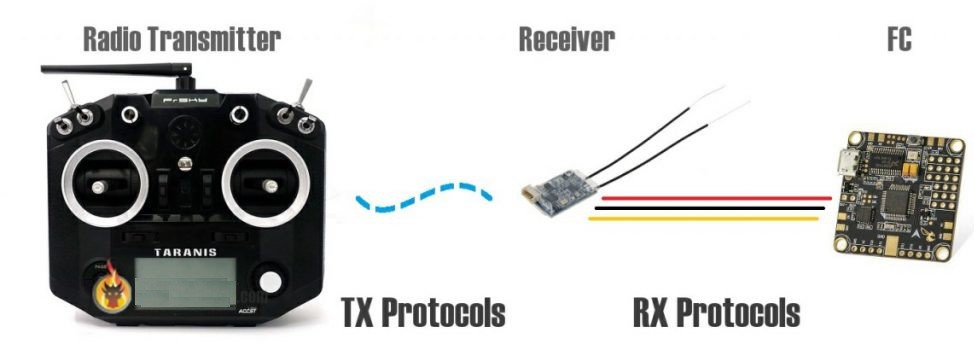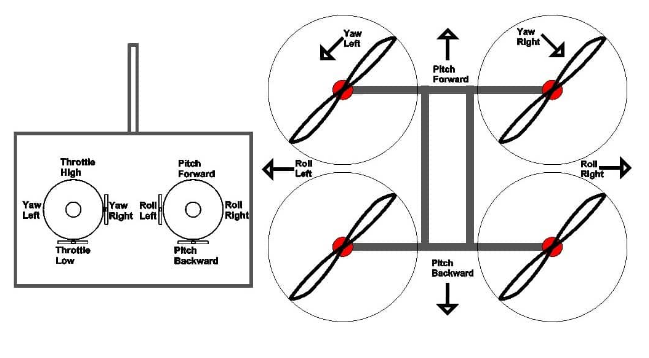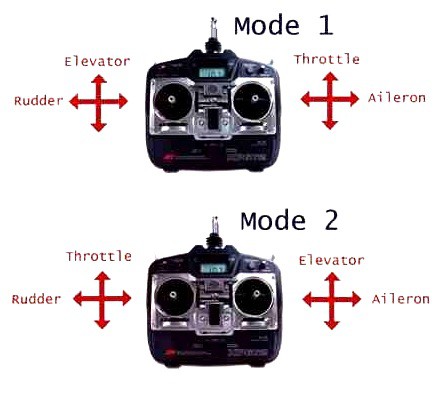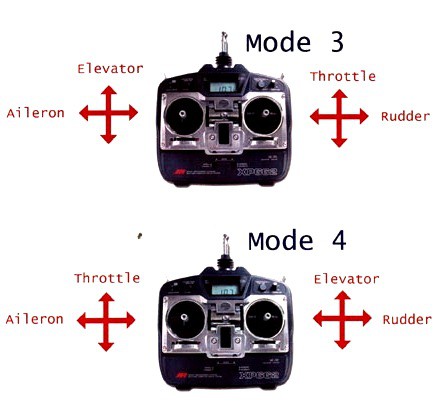Drone Transmitter and receiver is one of the crucial components while building a drone.
It should be one of the first components that should be bought. It can be confusing as to which ones to buy. Also it is okay to spend a bit more on a good quality Radio Transmitter and Receiver as it will follow for many years to come.
This guide explains the basics of Radio transmitter and Receiver and what all parameters should be kept in mind while buying one.

What are Drone Transmitter and Receivers?
Drone Transmitter is an electronic device that uses radio signals to transmit commands wirelessly via a radio frequency over to the Radio Receiver, which is connected to the drone being remotely controlled. In other words, it’s the device that translates pilot’s commands into movement of the drone.

Radio Frequency
A drone transmitter uses many frequencies like: 27MHz, 72MHz, 433MHz, 900MHz, 1.3GHz and 2.4Ghz, 433Mhz, 900Mhz and 1.3GHz. Most transmitters work on 2.4GHz.
It’s become the standard for radio control after new protocols were created that introduced frequency hopping technology. It basically looks for available channel automatically to avoid interfering with other pilots, allowing multiple pilots flying at the same time.
A Receiver must be compatible with the Radio Transmitter which in most cases means that the same brand of Rx and Tx need to be purchased in order to establish a communication. There are however radio receivers that may work with the same protocol but are not from the same brand.
Frequencies must also be the same on both Rx and Tx. For instance; a 2.4GHz Transmitter can only work with 2.4GHz Radio Receiver.
Gimbals
Gimbals are the sticks that translate a pilots input into the digital data transmitted to the radio receiver. Gimbals quality is one of the most important parameters while flying a drone. It can affect the handling when flying a drone, and the smoothness of your control. It can be one of the factors that decide how good you can fly a drone.

There are two types of gimbals commonly used
- Hall Effect Gimbal (digital)
- Potentiometer type Gimbal (analogue)
Hall Effect gimbals use hall sensors with magnets to capture the stick position values and is therefore more resistant to wear. These gimbals are also more precise.
Potentiometer type gimbals uses a brush to capture the value of stick inputs and is therefore prone to wear out much quicker.
Channels
A Drone Radio Transmitter transmits commands via channels. Each channel is an individual action being sent to the aircraft. The basic channels are given below:-

- Roll. Moves your drone left or right in the air, literally “rolling” your drone.
- Pitch. Tilts your drone forward or backward.
- Yaw. Rotates your drone clockwise or counterclockwise, allowing you to make circles or patterns in the air.
- Throttle. Controls the amount of power sent to your drone, which makes the drone go faster or slower. It is recommended to have 1 or 2 extra channels so as to switch between modes. The number of channels you can use is also limited by the receiver protocol (the connection between receiver and flight controller).
Modes
When purchasing an FPV Drone Radio Transmitter, you need to determine which “Mode” you would prefer to use when flying.
The mode determines aircraft movement assigned to a certain stick movement. There are 4 transmitter modes with Mode 2 being the most popular and is usually set as the default mode on most radios.


Radio Receivers
A Radio Receiver is the device capable of receiving commands from the Radio Transmitter, interpreting the signal via the flight controller where those commands are converted into specific actions controlling the aircraft.

A Receiver must be compatible with the Radio Transmitter which in most cases means that the same brand of Rx and Tx need to be purchased in order to establish a communication. There are however radio receivers that may work with the same protocol but are not from the same brand.
Frequencies must also be the same on both Rx and Tx. For instance; a 2.4GHz Transmitter can only work with 2.4GHz Radio Receiver.
Operating system
Every radio has its own operating system that is the user interface. OpenTX is one of the most used open source OS. It is an open source custom firmware made for RC radio transmitters, compatible with the following radios:
- FrSky Taranis X9D, Q7X, X9E
- FrSky Horus X10, X12
- Turnigy 9X
- FlySky 9X
OpenTX is a highly configurable system offering plenty options for all types of RC models. It is created by FPV pilots with pilots in mind.
Fitting
Fitting can vary person to person. Considerations like Weight, placements of the sticks, length of the transmitter, etc. It’s not an important thing but one may consider it especially for applications like drone racing.
Conclusion
Thus, while selecting your Drone Transmitter and Receiver, it is important that they are compatible with each other in terms of frequency and other parameters. Also, it is necessary that both the components have the size and features according to the specifics needed. It is recommended to purchase a high quality Radio transmitter with Receiver when starting out to fly your own drone as it is one of the components that will last long enough.
Also a Drone Simulator can get better at Drone flying and possibly enter the drone racing hobby.
With all the parameters taken into consideration you can purchase a good transmitter and receiver which will be for a long haul and a good long time investment.
If you are concerned as to which Transmitters to buy in the market Don’t Worry! I got the perfect link where you can purchase your ideal transmitter and receiver. Here’s the link for you Robu.in. For Additional Products do take a look at Robu.in for some exciting prices and Drone transmitter and Receiver.
 akanzler007
akanzler007
Discussions
Become a Hackaday.io Member
Create an account to leave a comment. Already have an account? Log In.